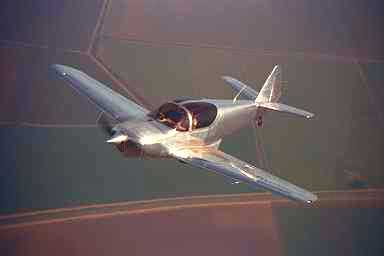

G.U.M.P Not Chump
|
Most pilots are intimately familiar with G-U-M-P, a mental "checklist" standing for Gas-Undercarriage-Mixture-Prop that is used on final approach to prevent gear-up landings, fuel starvation, and other mishaps. But not even "GUMP" can save the day if prior checks of flight-critical items--and good judgment--are suspended. An ASRS report illustrates: We had just completed an extensive annual inspection on this aircraft. I was proud to certify its airworthiness. I had promised to fly an acquaintance's son (age about 25) previously and today he showed up for the flight. This was to be the son's first airplane ride ever. I spent an extra amount of time going over the pre-flight with him. The right fuel tank was nearly empty (about 5 gallons) but the left side had plenty of fuel. When we boarded the plane for flight I made the error which would result in this incident. I had the fuel in the "off" position for maintenance and in a rare case of disorientation selected the right tank for the flight... |
 |
Returning to the airport traffic pattern I entered upwind and as I was completing the cross-wind leg, about to start my landing checklist, the engine quit. I immediately set the airplane up for best glide and started going through emergency procedures. I checked everything but the fuel selector because I did not consider that I was out of fuel (believing I was on the fuller tank). My next mistake was in extending my downwind too much while going through the procedures, and when I did finally turn base I was short of altitude. I landed in the corn less than a hundred feet short of the grassy approach to the runway. I didn't realize I was on the empty tank until after we landed and heard the electric fuel pump clicking away. I showed the young man the fuel selector before we started up, and I'm sure I'll always wish I'd asked him to change the tanks...I [also] wish I had concentrated more on landing the airplane on the runway while it was right there for me...
It was our reporter's apparent practice to check and set the fuel selector only once. Sound procedures call for manual and visual checks during preflight, before takeoff, and before landing. Also highly questionable was the decision to carry a passenger on the first flight following extensive maintenance. Finally, the entire incident might have been prevented by the simple expedient of refueling the aircraft prior to flight.
"The Pattern Serves a Purpose"
Our next reporter learned not only about the proper use of "GUMP," but also that there's more than one reason for flying a standard traffic pattern.
It was...near the end of a very long day. I was completing a three-hour flight on an aircraft with a total of 6 hours since major overhaul and 3 hours since annual inspection. The last 1.5 hours...was at night and over rough terrain. There was no moon out, and therefore it was very dark. Although the weather was VMC, I had to keep a close eye on the gauges due to the lack of horizon. Needless to say, the last leg of this trip was very stressful...
When I finally saw my destination airport...I noticed that my descent from cruise was going to leave me too high and fast for a straight-in approach. Therefore, I slowed the aircraft down to flap extension speed, and lowered the gear and flaps nearly simultaneously. Knowing I needed to lose altitude quickly, I immediately side-slipped the aircraft until short final... Once there, I initiated my flare for landing. The next thing I heard was the ticking of the prop and the scratching of the airplane fuselage on concrete. My initial thought was that I did not put my gear down. However, I remembered doing so [because] I needed the drag. I checked the gear selector. It was in the down position. Then I remembered that I had never verified that the gear had actually come down.
How could this have happened? I realized that three systems must fail for this incident to have occurred. First, the actual gear system must fail. This mechanical system is not foolproof. Indeed, on this night, the electric motor which drives the hydraulic pump did fail. Therefore the gear was only partly extended.
Second, the pilot must fail...It was a long day, I was tired, stressed, and hungry (I had not taken the time to eat), and I was trying to salvage a poorly planned approach....
And finally, the gear warning system must fail. This is another mechanical system which is prone to failure. This final system failed along with the previous system, on the same approach.
As a pilot, and not a mechanic, I can only improve on the second system. I've determined that the most important element which could have avoided the human error, was to have flown a complete landing pattern. To fly a pattern appropriately and successfully, I would have lost altitude before...descending into the pattern...Before this incident, I flew the pattern only if other traffic was in the area. However, I now realize that the pattern serves a purpose other than keeping aircraft sequenced; it helps to distribute and organize tasks required for landing. Each element has its proper place...
Also, I did not mention the checklists. I did complete the "GUMP" checklist. However, I rushed through the list. Instead of verifying each action, I performed the task almost simultaneously. A checklist is no good if performed in this manner. It is not only important to perform the actions, but the actions must be accomplished correctly and verified.
| ŠAvStop Online Magazine Contact Us Return Home |